|
Giant Barrel Sponges (Xestospongia muta) are some of the most prominent animals found on a Caribbean reef. (Yes, sponges are actually animals!) They are famously long-lived and may even reach the great age of 2000 years. Even the average, oil-drum sized sponges can be hundreds of years old. One would think that they have a knack for survival and adapting to changes in the environment. Recently, however, they have come under attack from a mysterious condition, known as Sponge Orange Band (SOB) and they are dying off at an alarming rate. We have seen this SOB here on Roatan sporadically over the years, but 2018 has been particularly sad; many of the sponges I use to navigate my way around the reef have disappeared. The sponge pictured above was on the wall at Overheat Reef. It was a marker for me to know when to turn in from the wall and make it back home on my regular shore dives there. Over the course of September I witnessed it crumbling apart. This one managaed to hold on for almost three weeks, but we have seen other Giant Barrel Sponges succumb to the condition and fall apart in as little as four or five days. What is Sponge Orange Band? The short answer is, no-one knows yet. It was first documented in June, 2005 by Dr Joseph Pawlik from the University of North Carolina, Wilmington. It came under a great deal more study in 2012, when Florida had a massive outbreak and an estimated 10-20% of their Giant Barrel Sponges were lost. Since then teams of scientists have been trying unsuccessfully to find a culprit, looking at factors like microbial infections, pollution, increased agricultural run-off and higher sea temperatures. Giant Barrel Sponges get their reddish color from symbiotic cyanobacteria living within their tissues. Affected sponges seem to have greater concentrations of harmful cyanobacteria, similar to the ones found in some coral diseases (Leptolyngbya), but exactly how it all happens isn't understood yet. Affected tissue has even been transplanted into healthy sponges, but it did not spread. According to Dr. Pawlik: "There has been nothing to establish a pathogenic agent or to determine whether it is spread like a disease." Sponges are known to be very sensitive to temperature changes and new studies suggest that climate change is playing a large part in the recent increase in SOB (click here to read more...). Why some sponges are affected while others are not is still a mystery. Dr. Pawlik's latest work leads him to believe that environmental stresses (whether higher sea temperatures or microalgal blooms is unknown) cause the sponge's pumping action to shut down, starting the process. Sponges are filter-feeders, capable of filtering as much as 20,000 times their own volume of seawater every day. Once the condition sets in and this pumping action stops, the animal simply crumbles apart. Giant Barrel Sponges with SOB lose their natural defenses and are quickly fed upon by reef fishes. One of the infected sponges found while exploring "Texas" with West End Divers A Sad day on the Reef: Many visitors to Roatan have been lucky enough to visit this huge sponge at the dive site known as "Texas" (everything is bigger in Texas). Last month saw this ancient animal finally succumb to SOB. It stood over 7 feet tall and 6 feet wide, and could have been growing in that spot for the last 1000 years. I have been visiting it for almost twenty years now, and there is no way to describe how it felt to see it as a crumbled mass of dead sponge tissue on the sea floor. Like losing an old friend. The news may not be all bleak. It does seem that some Giant Barrel Sponges are more immune to SOB than others, and there is a lot more work being done recently to unravel this mystery. Grants have been set up (click here to read more) and the work of Dr. Pawlik and others continues. Whatever is causing SOB, I can only hope that funding for research continues, in order to help predict and possibly prevent future outbreaks. There may still be time to save these beautiful animals before we lose too many more.
It is, after all, an animal that can live for millennia.
2 Comments
|
AuthorMickey Charteris is an author/photographer living on Roatan. His book Caribbean Reef Life first came out in 2012 and is currrently into it's sixth printing as an expanded fourth edition. Archives
August 2019
Categories
All
|
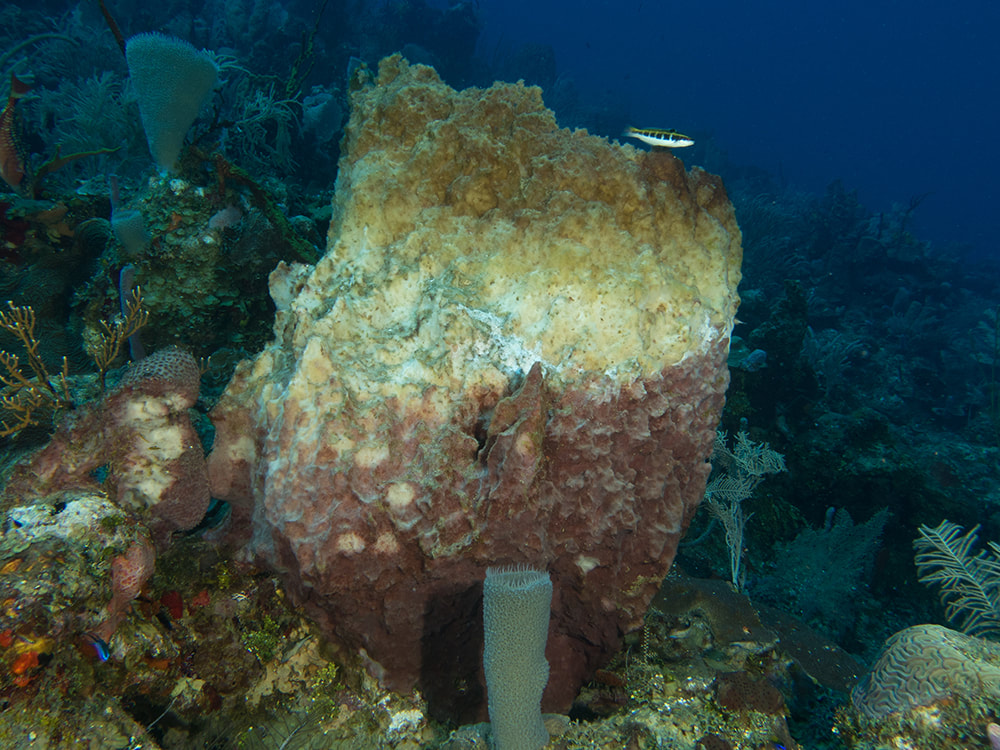
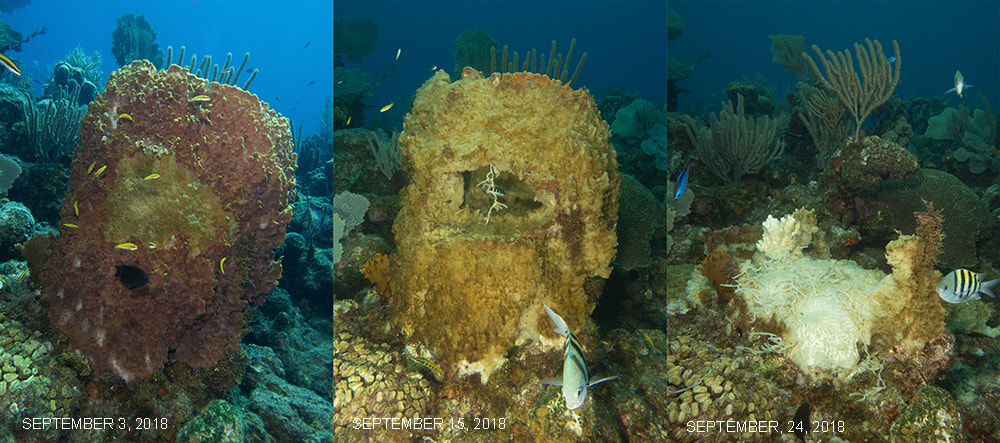
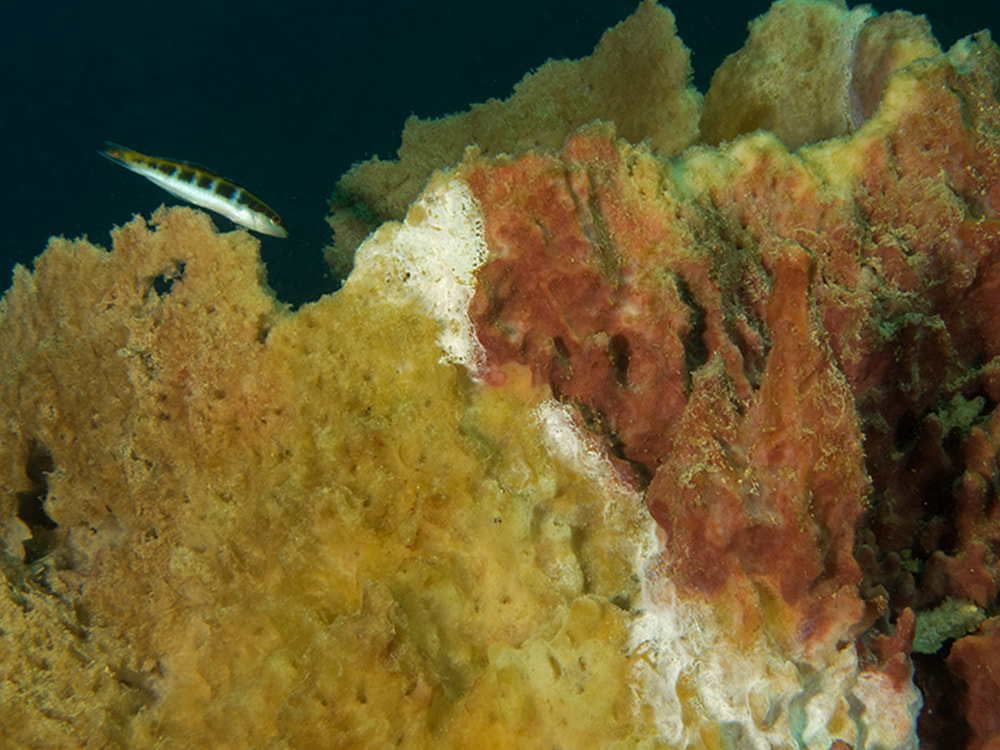
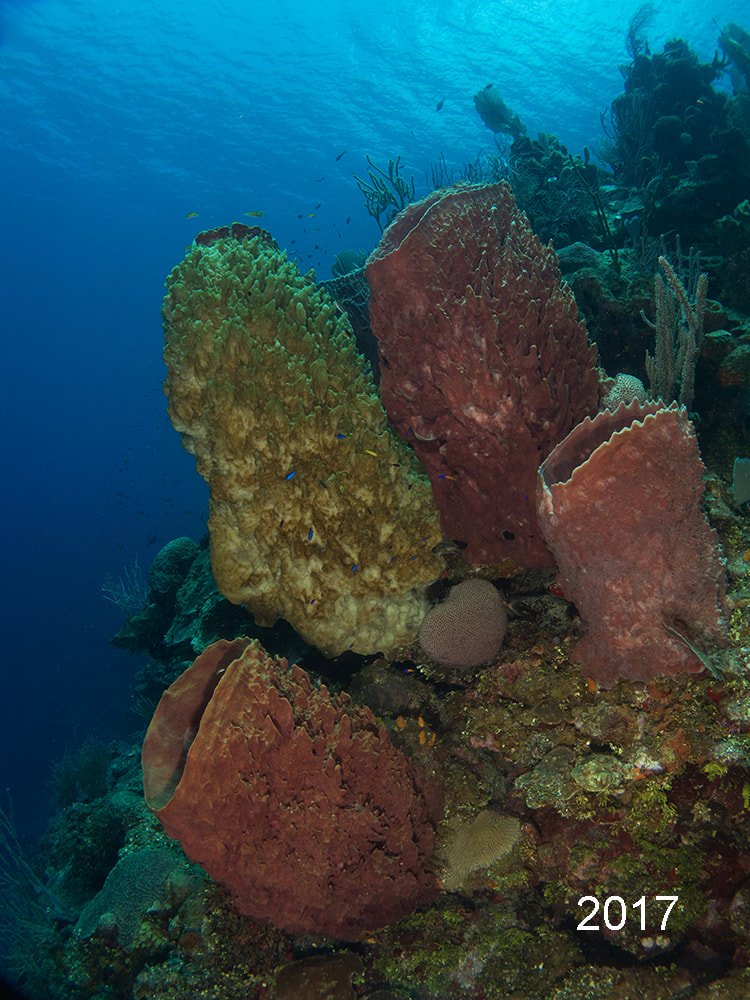
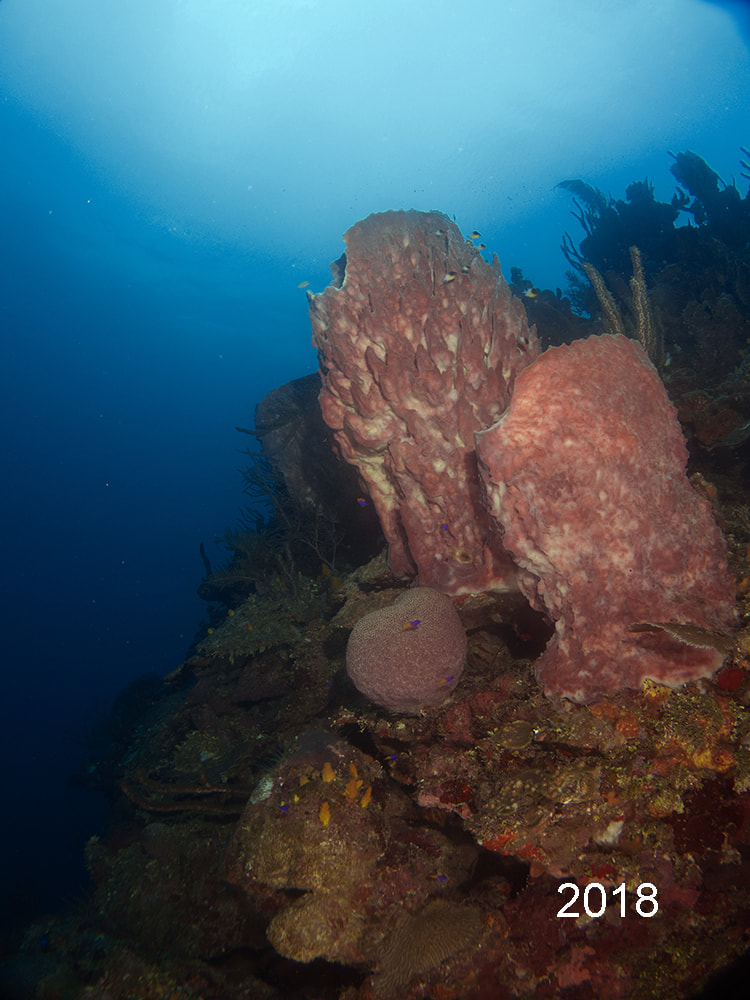
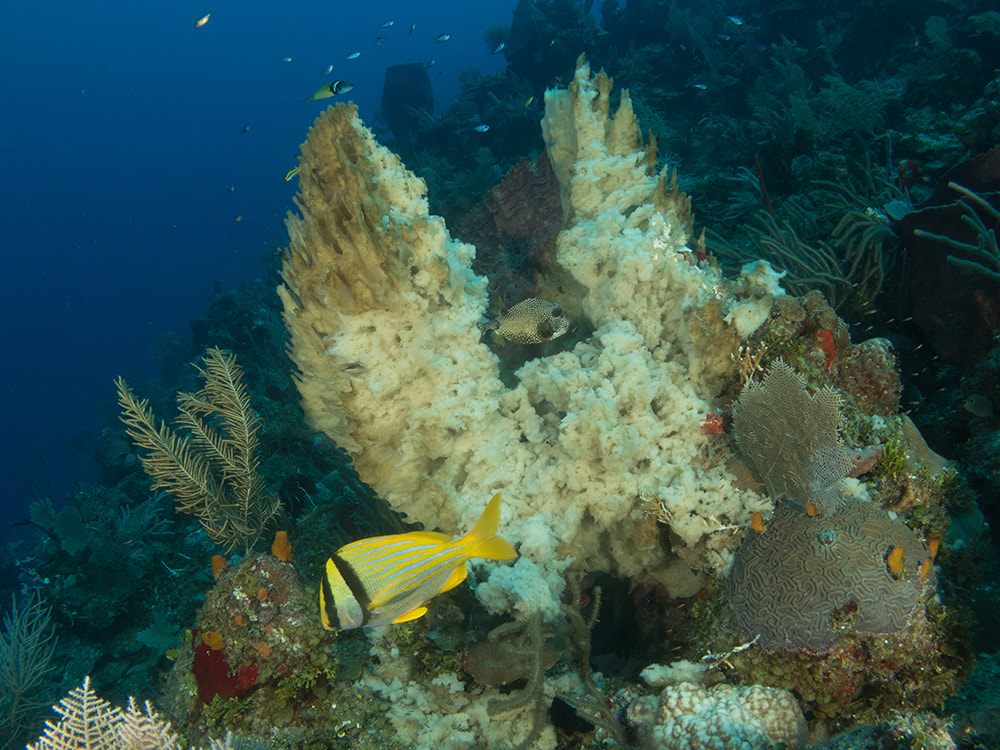
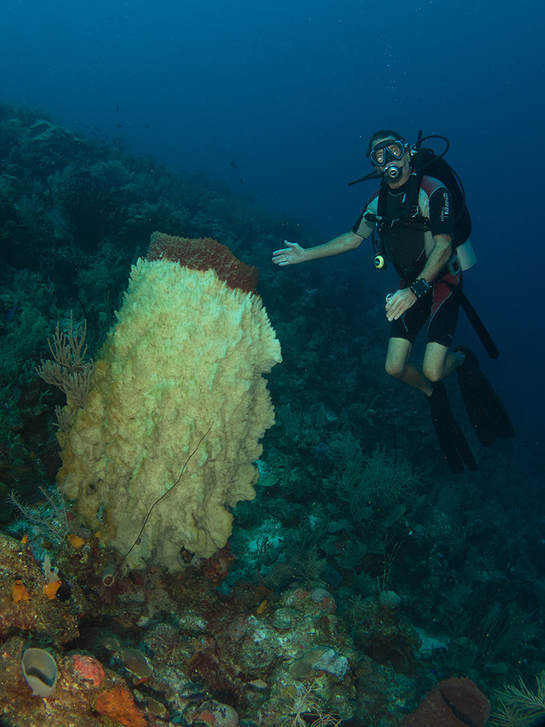
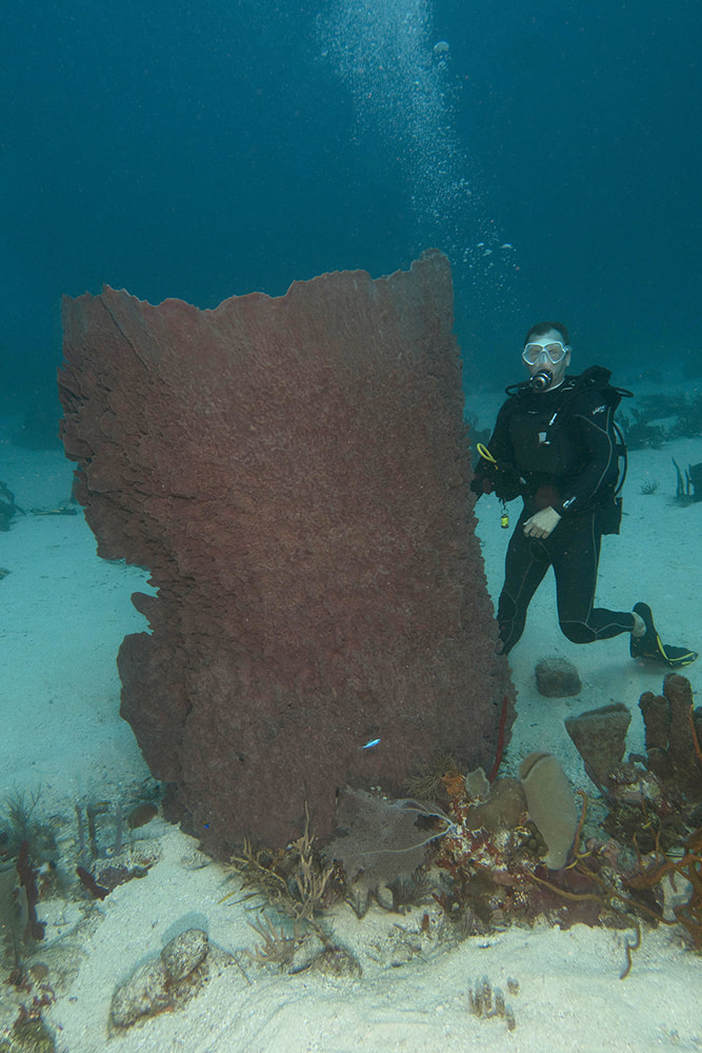
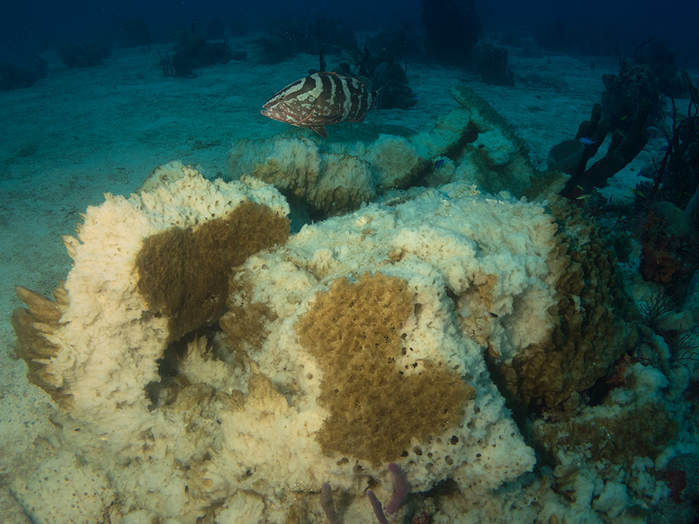
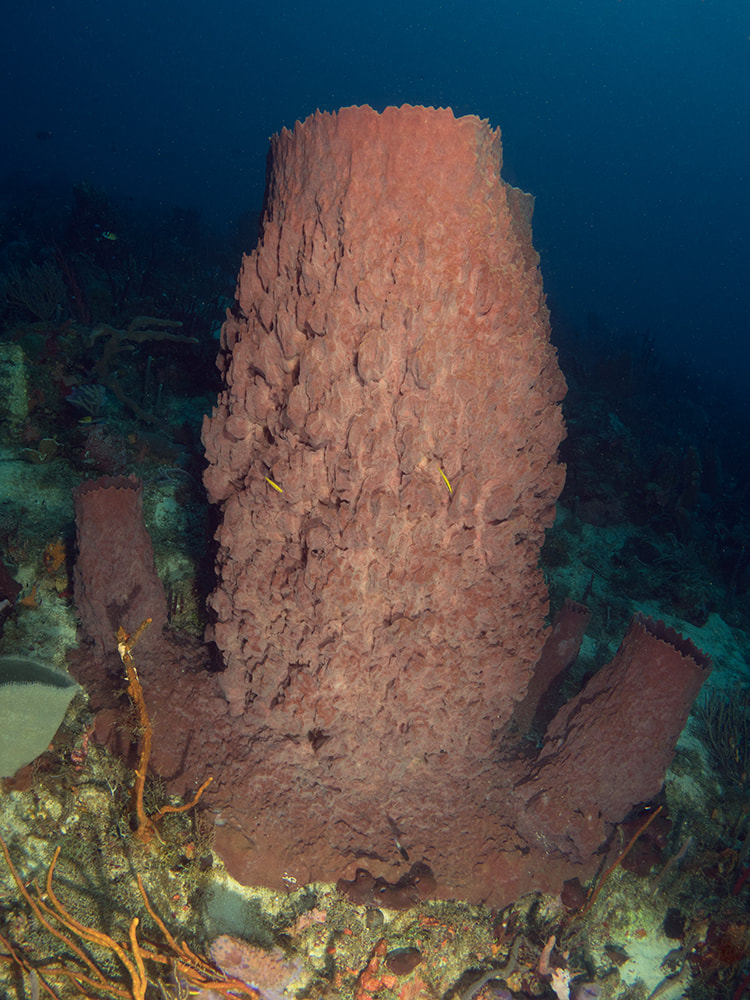
 RSS Feed
RSS Feed